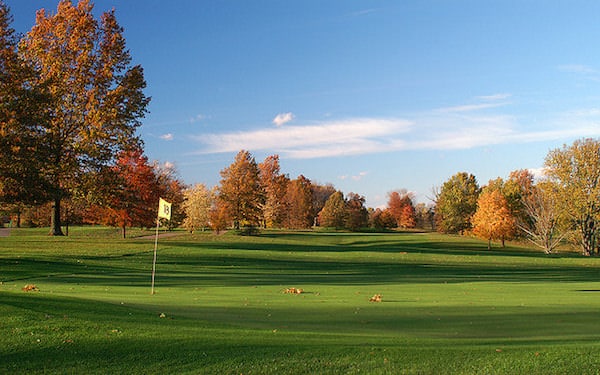
Even without novice players mucking up the course with poorly aimed swings right into the turf, cold temperatures and soggy weather can significantly damage grass turf – and with winter right around the corner, landscapers and maintenance experts are bracing for it. For golf courses, this is the time when superintendents start to wonder what the future will hold for the turfgrass that is the key to their prosperity – one bad winter can lead to a very patchy spring, requiring extra grass maintenance to get the course looking its best just as every other golf course in British Columbia scrambles for business.
That’s why new turfgrass research coming out of Guelph University sounds particularly Promising for golf superintendents. As Turf and Recreation Magazine quotes Dr. Eric Lyons, of turfgrass science at the University of Guelph, across the country, golf superintendents are having to do more with less; herbicides are under attack by regulators; biological pest control and weed control can be challenging to implement and even more challenging to get comparable results with chemicals; custom-grown grass varietals that are naturally more hardy can be a solution (and we do offer a range of grass products for that very purpose) but it also can take a growing season to implement if there is no custom varietal immediately available.
Changing plant growth regulators within the grass is one area of promising research that Lyons is pursuing – which could have a big impact for maintenance of golf course grass.
<blockquote>One parameter they are examining is carbohydrate — or sugar — production, specifically the production of fructans.
Kerr says fructans have two main functions that influence winter hardiness — as a cryoprotectant, and as an energy source. Fructans lower the freezing point of plant cells, preventing ice from puncturing the cell and letting important sugars leak out. Fructans also act as a food source for plant regrowth in the spring.
Lyons says the most winterkill occurs when plants thaw and refreeze. If plants run out of energy due to thawing and refreezing, they cannot regrow in the spring.
The researchers are also investigating plant hormones — the way plants signal and get ready for stresses, such as freezing temperatures.</blockquote>
The research has big potential. If it works, golf course superintendents may find their work to be a lot easier – though they’ll always have to deal with the damage caused by the wild swings of bad golfers.
Extra Credit: Upcoming Education about Turfgrass from the WCTA
As Western Canada’s biggest supplier of natural grass turf to landscapers, municipalities and golf courses from BC to Alberta, we naturally take a great interest in the latest research coming out of professional associations and universities. For our professional colleagues and clients, here are some items we’ve been watching:
The Western Canada Turfgrass Association is working with the Golf Course Superintendents Association of America to deliver some very up-to-date findings via webinars. See what’s coming up:
Order fresh sod now or request a custom quote for your project.
Save with a Yearly membership. Custom fertilizer program. Fertilizer, topsoil, seed delivered to your door before you need it. Don’t forget, we will remember for you!
Western Turf Farms Abbotsford
39183 No.5 Road Abbotsford, BC V3G 2G3
Western Turf Farms Langley
7880 240 Street Langley, BC V1M 3P9
© Copyright 2025, all rights reserved by Western Turf Farms. By using our website you agree to our Disclaimer and Privacy Policy.